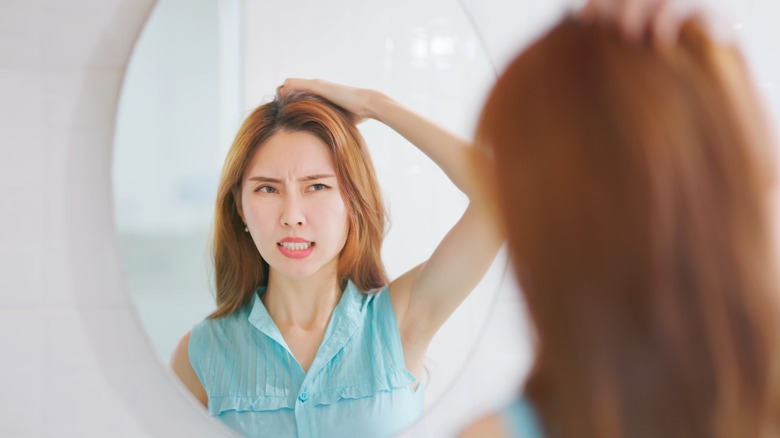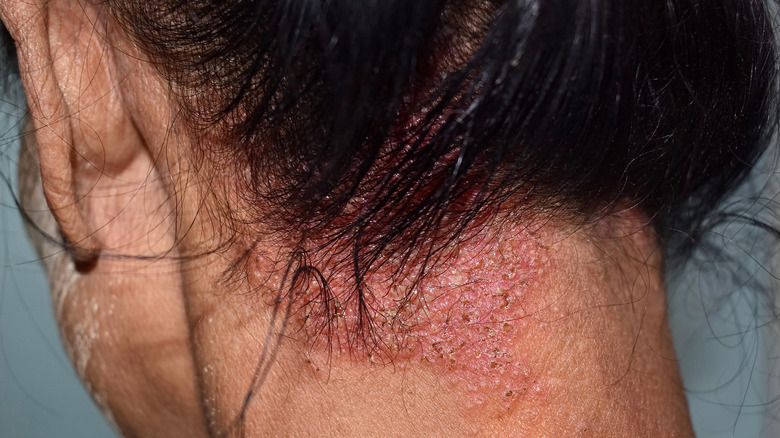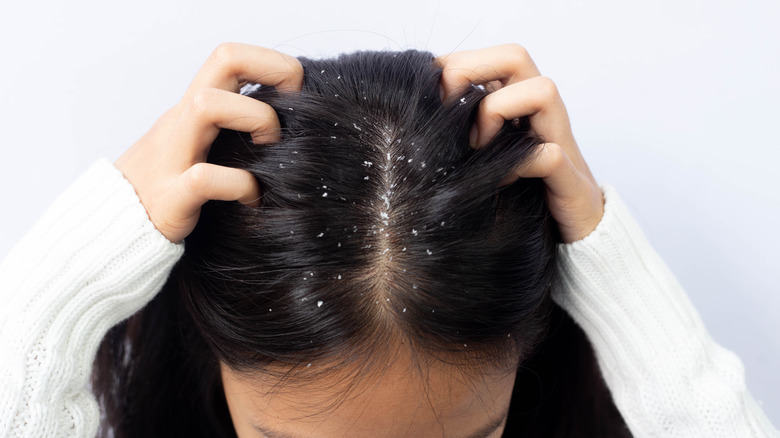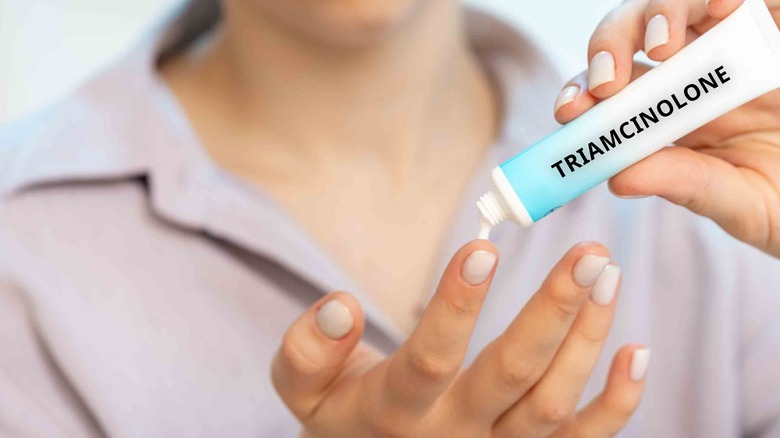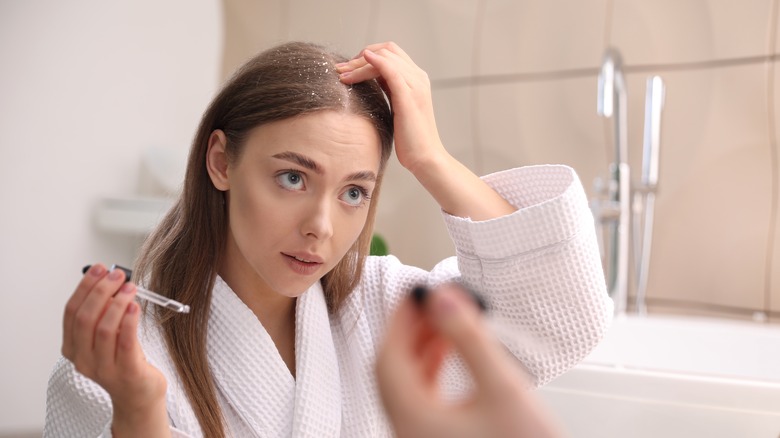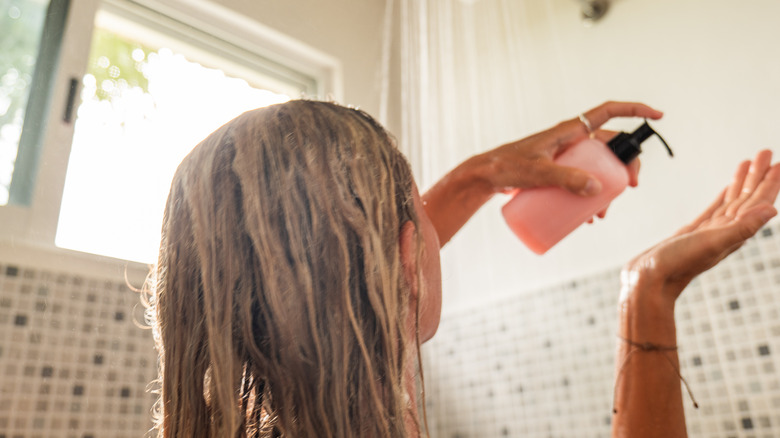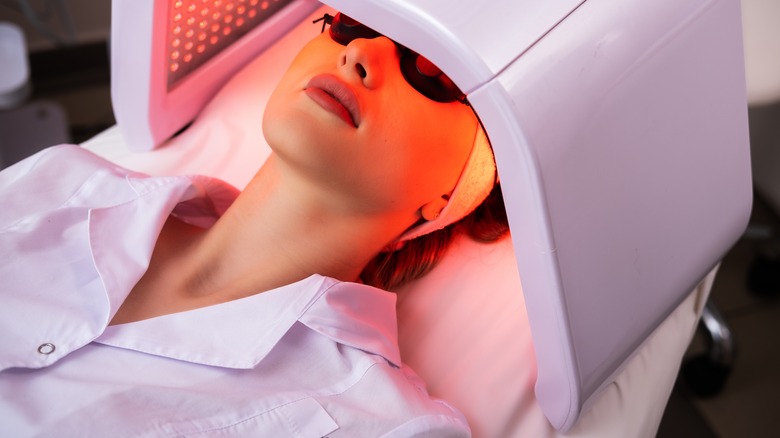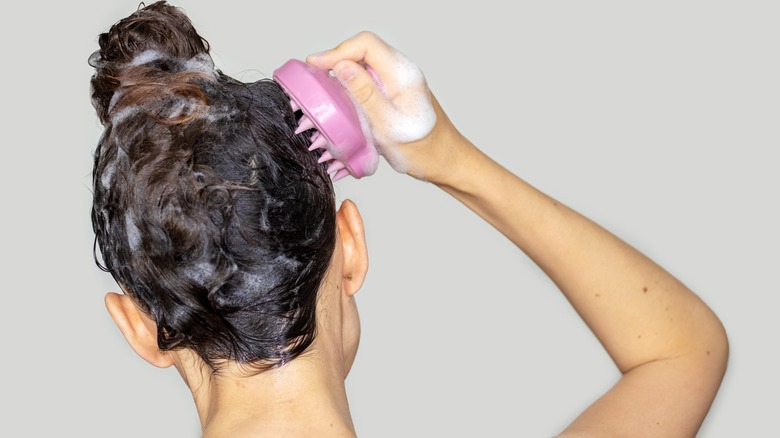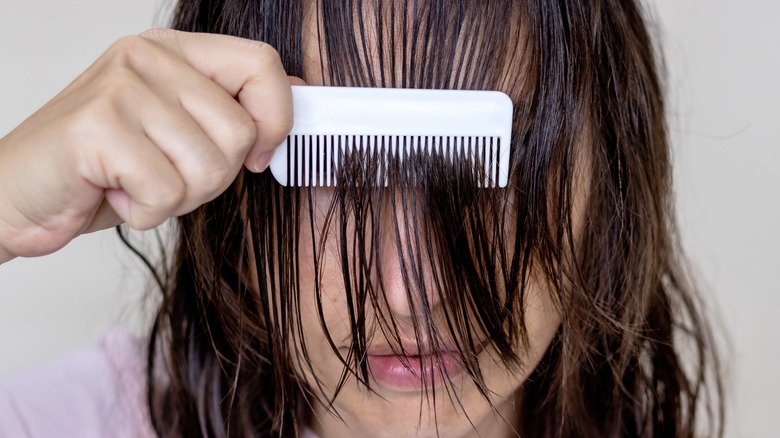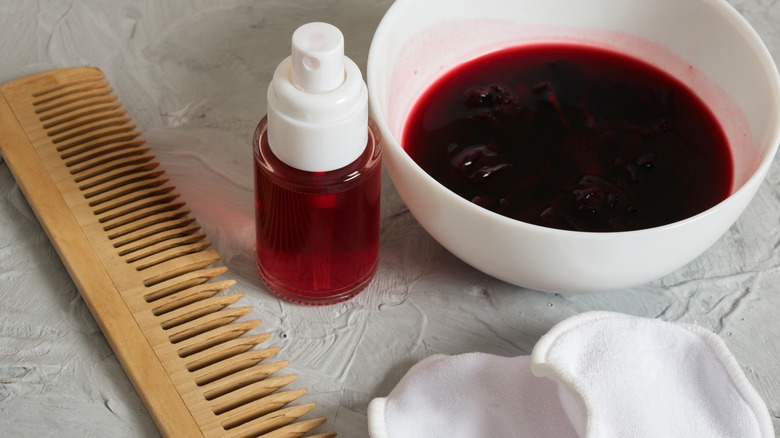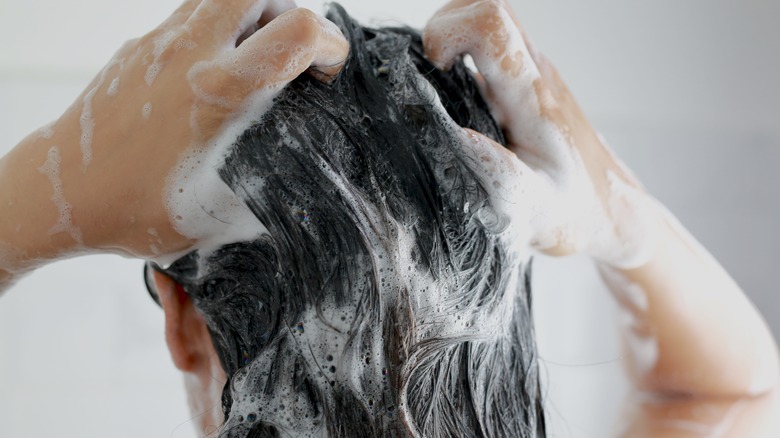Your Ultimate Guide To Treating Oily Dandruff
Oily dandruff is a common skin condition characterized by excessive production of oil (sebum) on the scalp. This leads to the flaking of the skin, causing oily and yellowish flakes to appear in the hair, on the scalp, and sometimes other parts of the body. It is often mistaken for regular dandruff. While we won't say one is worse than the other, oily dandruff can be displeasing to look at and sometimes more pervasive than regular dandruff.
According to 2015 research, it can be quite difficult to distinguish from regular dandruff as it's often caused by the same factors. However, if you get dandruff symptoms on other parts of the body, you're probably dealing with oily dandruff. Additionally, while it can appear as the same white flakey substance as regular dandruff, some people may notice that it can be slightly yellowish in color and may even form crusts around the hair follicles. Other differences in oily dandruff are that it tends to be itchier and causes redness around the scalp (per the Journal of Clinical and Investigative Dermatology).
Regardless of which version of the condition you have, the symptoms can be challenging. By gaining a deeper understanding of how and why oily dandruff manifests, you can better determine which treatment options are best for you.
What is oily dandruff?
Oily dandruff is caused by a condition called seborrheic dermatitis (via Healthline). Its most recognizable feature is scaly, oily patches of skin that produce dandruff-like flakes. These patches often appear on parts of the body with more sebaceous (oil-producing) glands, such as the skin and face. Although it's a common condition, its manifestation can vary. Some people may only experience it on the hair and head, while others may have to deal with it on other parts of the body.
Seborrheic dermatitis can usually be distinguished from regular dandruff because it causes visible inflammation and can appear in areas other than the scalp. It can invite other bacteria that can cause inflammation as irritation flares and the skin's barrier is damaged. This may make it seem like an allergic reaction or that certain skin hygiene practices are causing the condition. However, this is not the case. Rather, it's believed to be the result of a specific type of fungal agent that can affect anyone, regardless of their background. Although the condition may sometimes go away on its own, it can also be long-lasting. Therefore, if you're experiencing the symptoms we've described above, it's best to visit a dermatologist who can provide a proper diagnosis (via the American Academy of Dermatology Association).
What causes oily dandruff?
Research from 2005 suggests there are three main factors that seem to affect the development of seborrheic dermatitis. The first is an immune reaction to the microscopic fungus called Malassezia. Although this fungus is present on the skin, it doesn't usually cause issues unless it starts to proliferate. While researchers know that it's attracted to the oil in the skin, they don't fully understand its role in seborrheic dermatitis and why it can be more active in some people than in others. However, it consistently appears to be present when the disease flares up.
Excess sebum or oil production could be a potential reason why the Malassezia fungus proliferates. The fungus not only lives in this oil but feeds off it, and in doing so, releases a type of acid that causes scalp flaking and itching. How the skin reacts to this acid is possibly linked to the third cause, which is a compromised immune system. In other words, if the skin can't fight the irritation effectively, it becomes more inflamed, which damages the skin's barrier and exacerbates the condition, as reported in the Journal of Investigative Dermatology Symposium Proceedings.
Anti-inflammatories
Corticosteroids are a type of anti-inflammatory that may be helpful for seborrheic dermatitis. They are known to improve symptoms such as redness, scaling, and itching. According to StatPearls, corticosteroids are effective in treating several skin-related conditions as they mimic the body's natural anti-inflammatory process. They prevent receptor cells in the body from releasing inflammatory cells, which suppress the overall immune response, including inflammation, swelling, and redness.
While there are several types of corticosteroids, two commonly used treatments for seborrheic dermatitis are hydrocortisone and betamethasone. Research published in 2014 shows that these medications are highly effective and safe in treating oily dandruff. Although they may have some side effects, such as excess hair growth, skin thinning, and irritation, they are still more effective in the long term, even when used in mild doses (per the Cochrane Database of Systematic Reviews). It is, however, worth noting that the use of corticosteroids for the treatment of seborrheic dermatitis should be done under the guidance of a healthcare professional.
Antifungal agents
Antifungal agents treat fungal infections by targeting and disrupting fungal cell structures or functions, inhibiting their growth (via Healthline). Azoles are a class of compounds within these agents that include topical medications like bifonazole, itraconazole, and ketoconazole. These medications also possess anti-inflammatory properties, making them effective treatment options for oily dandruff.
Research from 2012 in the American Journal of Clinical Dermatology explains that azoles can target Malassezia, the fungus potentially involved in seborrheic dermatitis, and help relieve symptoms. These topicals are popular additives for shampoos because they are attracted to similar cells as the fungus, namely, keratin cells. These cells are usually coated in sebum, making the topicals highly effective in treating the condition. However, if the symptoms are more severe, oral intake may be necessary, but there is a higher risk of side effects, including gastrointestinal and liver issues (via Medscape). So, they should be taken with care.
Anti-dandruff shampoos
Anti-dandruff shampoos are formulated with a variety of ingredients that target dandruff in different ways. The effectiveness of these shampoos varies depending on the specific properties of the ingredients that help with seborrheic dermatitis, especially for those with oily dandruff. In particular, shampoos containing a combination of antifungal and anti-inflammatory agents are found to be more effective in treating the condition than those with only one of these agents (via Healthline).
One such ingredient to look for is a combination containing selenium sulfide. According to 2021 research in the Journal of Cosmetic Dermatology, it can help in multiple ways and has been shown to reduce the symptoms of seborrheic dermatitis when used with antifungals like ketoconazole. Selenium sulfide also has anti-microbial properties that can tackle both the Malassezia fungus and any other irritant microbes. Additionally, it can slow the skin's natural turnover, which reduces flaking (per the Journal of Cosmetic Dermatology).
Phototherapy
Phototherapy is a medical treatment that uses specific wavelengths of light to help with inflammation and skin conditions. These light rays penetrate the skin at a deep level, which may stimulate wound healing, increase collagen, and reduce sebum (per Healthline). It is not a treatment that can be replicated by sun exposure, according to the British Association of Dermatology.
Research from 2021 has shown that phototherapy can be effective in treating seborrheic dermatitis for patients who have not responded to other forms of treatment. Certain light spectrums, such as red and blue light, can inhibit bacteria and fungi by oxidizing (attacking) these harmful bodies at the cellular level. Additionally, since phototherapy can reduce sebum production, it may prevent the spread of Malassezia. However, since research in this area is limited, phototherapy is typically considered a last resort if other treatments have failed (per the Journal of Cutaneous and Aesthetic Surgery).
Exfoliators
Exfoliators are any physical, chemical, or enzymatic means of removing dead skin cells. They can help remove oily dandruff flakes and reduce sebum. For instance, even a scalp massage can be considered exfoliation since you're rubbing your fingers against the skin. However, physical exfoliation like this can lead to irritation (per Healthline). As such, chemical exfoliants are commonly used for seborrheic dermatitis, such as BHAs (a type of skincare acid) like salicylic acid and benzoyl peroxide, as they are less abrasive and can exfoliate more evenly.
These acids have been shown in research from 2020 to have an effect on the Malassezia fungus (per the Journal of Dermatology). For instance, benzoyl peroxide can rapidly break down dead cells, bacteria, and fungi associated with seborrheic dermatitis, as well as help with inflammation and reduce the sebum these species live off. However, because the treatment is so aggressive, it might actually cause more flaking and scales for some people. Therefore, if it is used, it might be best to combine it with a strong moisturizing agent. Also, check with your dermatologist first to see if it's suitable for your skin type and the body area you intend to use it on.
Anti-keratolytics
Keratolytic agents, or anti-keratolytic treatments, are a type of compound that can break down microbes and dead skin cells around the hair follicles (via ScienceDirect). They release free radicals, a type of oxygen molecule, that attack bacteria around the hair follicles and break down the keratin in dead cells, allowing them to be washed away. Since the Malassezia fungus thrives in environments like this (per PLOS Pathogens), anti-keratolytic treatments can reduce build-up around the hair and help other treatments penetrate the scalp better.
2020 research suggests keratolytic agents can be effective in loosening the bonds of these dead keratin cells and are commonly used as an effective treatment for seborrhoeic dermatitis. Acids such as urea, C8-lipo hydroxy acid, and azelaic acid are often used in these treatments. They can be used in the form of shampoos, along with conditioners and other treatments, as part of a long-term treatment regime for oily dandruff (per the Annals of Tropical Medicine and Public Health Journal).
Topical antibiotics
Another fallback for resistant seborrhoeic dermatitis may involve treatment with topically applied antibiotics, which target the accompanying bacteria that seborrhoeic dermatitis may acquire as a side effect of the condition (via DermNet). According to research published in Medicine in 2017, such infections are common with any type of dermatitis, with around 23% of seborrhoeic dermatitis sufferers getting infected. In particular, the bacterial species Staphylococcus aureus is present in about half of all infection-related skin issues (per the Medicine Journal).
It is common to get a secondary bacterial infection as a result of inflammation or damage to the skin's barrier when a person has oily dandruff or any skin-related disorder. This can worsen the original symptoms, so topical antibiotics are used to help treat this. As literature in the Indian Journal of Dermatology describes, they can provide targeted treatment for infected areas, which should reduce symptoms. However, it's probably best if they're used with other treatments, as there's some evidence that they aren't that effective at limiting bacterial spread.
Natural treatments
For individuals with mild cases of oily dandruff, there are a variety of non-medicated, plant-based treatments available that could help alleviate symptoms. These remedies are believed to have antibacterial, anti-inflammatory, and anti-fungal properties that can be effective in managing seborrhoeic dermatitis (via Healthline). One such remedy is aloe vera, which has been used for centuries for its medicinal properties. Another remedy that has gained popularity in recent years is tea tree oil. Using products that contain some of these ingredients could be beneficial for some people in managing flare-ups before moving on to stronger treatments.
A 2017 study suggested that many herbal remedies demonstrate clinical signs of reducing redness, itching, and shedding (per the Journal of Clinical and Aesthetic Dermatology). These ingredients are thought to have minimal adverse reactions and may help stop the spread of the pathogens responsible for oily dandruff. Although the study focused mainly on the face, the premise suggests that these remedies might also relieve mild symptoms of oily dandruff.
Washing your hair more frequently
As dermatologist Dr. Dray explains, good haircare practices can be beneficial for a number of hair and scalp-related issues. For instance, since general dandruff is caused by the same fungus, basic dandruff treatments can be helpful when dealing with seborrheic dermatitis. Dr. Dray suggests that a few simple things, such as using an anti-dandruff shampoo instead of a regular shampoo, may be helpful for people who have never had oily dandruff before. "For those of you out there who suffer from oily scalp ... I recommend a salicylic acid-based shampoo," she states. Another easy tip is to consider the frequency and consistency of your hair-washing routine.
The frequency of washing can be crucial in treating seborrheic dermatitis because we're trying to remove the buildup of oils and cells that fungus and bacteria crave. You can increase your shampooing frequency to around two to three times a week to reduce this risk, but make sure to leave the product on for the amount of time specified and rinse thoroughly. It's fine to follow with conditioner; in fact, it's important to avoid drying out the scalp too much, which can make flakes worse. If these treatments don't work, you can try something formulated especially for seborrheic dermatitis (via Mayo Clinic).
Making changes to your diet
When attempting to treat oily dandruff, it may be helpful to consider other factors such as diet and nutrition, as certain deficiencies can worsen the condition. According to research published in Dermatology Research and Practice in 2021, seborrheic dermatitis has been linked to low levels of vitamin D. The study found that those with this deficiency were not only more susceptible to the condition but that it also exacerbated symptoms, with low levels making scalp issues more severe.
A 2019 study also indicates that diet can generally impact oily dandruff when we are not receiving sufficient nutrition and minerals. Western diets high in meat and processed foods are believed to increase the risk of seborrheic dermatitis for females, while those who consume diets rich in antioxidants, such as fruits and vegetables, could reduce the risk of the condition (per the Journal of Investigative Dermatology). This is most likely due to the anti-inflammatory properties of antioxidants, so increasing your intake of fruits and vegetables can provide these natural benefits.
Consider lifestyle changes
Unfortunately, the cause of oily dandruff is still unclear, and we are missing certain information about why it happens in the first place. However, clinicians have observed that stress and hormonal changes may influence it (via the National Eczema Association). Although it is hard to know for certain, stress could be a factor in either causing it or making it worse.
What we do know from 2017 research is that people who live with anxiety, depression, or have highly neurotic personalities seem to have higher comorbidity for seborrheic dermatitis. The Archives of Clinical Psychiatry Journal suggests that these conditions could trigger the onset of the disease, making it an illness brought on by the mind rather than the body. It's reasonable to believe that having oily dandruff could damage a person's self-image and therefore affect their mental health. Nevertheless, looking at lifestyle factors that can reduce this risk, such as stress monitoring, exercise, or therapy, could be helpful.
